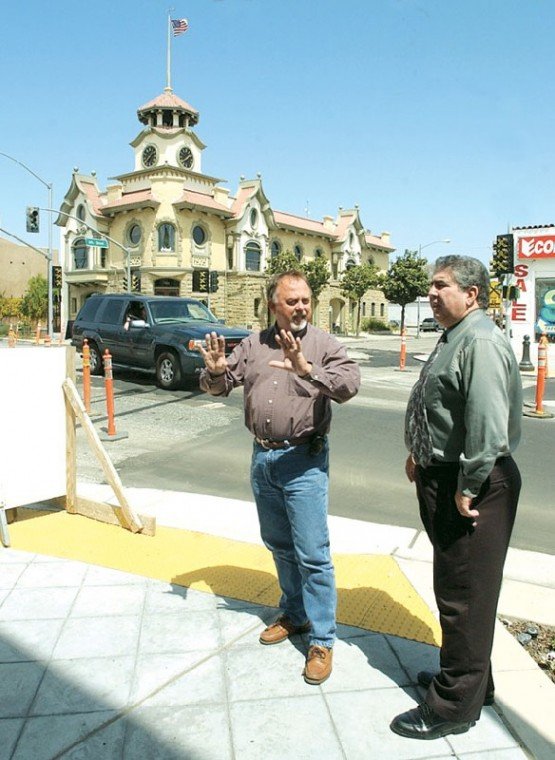GILROY
– A task force plans to ask City Council for more market-rate
housing permits downtown so builders can add upstairs
apartments.
The city has run out of permits for small projects of fewer than
12 housing units, unless those projects were committed to house
only low-income residents for the next half-century.
GILROY – A task force plans to ask City Council for more market-rate housing permits downtown so builders can add upstairs apartments.
The city has run out of permits for small projects of fewer than 12 housing units, unless those projects were committed to house only low-income residents for the next half-century.
Most members of the Downtown Specific Plan Task Force think this is stifling their vision of an active residential downtown in which people live above the stores and restaurants they patronize. Several task force members, including Gilroy Economic Development Corporation Executive Director Bill Lindsteadt, said some downtown projects have already been dropped because there are no permits available.
“If you come in right now with six residential units and a beautiful new building, city staff will tell you there are no (housing permits) left,” developer and task force member James Suner said Wednesday.
Suner took the lead Tuesday in proposing a study session with the Council to discuss how downtown could get more market-rate housing.
Developers already claimed all 150 small-project exemptions the city’s growth-control ordinance allows between this year and 2013. No one, however, has taken any of 530 affordable units the city will allow in that same time period.
The Council has made downtown revitalization a priority, Suner said, but their allocation of small-project housing hasn’t reflected that.
“They’ve given most of the (growth-control) allocations to outlying areas,” Suner said.
One of the few downtown housing plans to make it is for a new housing/retail/office structure on a vacant lot at Monterey and Lewis streets, next to the Strand Theater. The Hewell and Sheedy contracting firm proposed it; David Sheedy sits on the task force.
“That project would not get past the planning counter today,” Suner said.
The growth-control ordinance has a 3,450-unit cap for new housing in Gilroy over 10 years, starting this year. This goal cannot be changed until 2009.
The Council is allowed to make exceptions in certain circumstances, however: if a major industry comes to town but cannot find sufficient housing for its employees, for the good of a nonprofit organization that benefits the community or to accomplish the goals of an approved specific plan or master plan.
The latter is what task force members want. The problem is, they don’t have a specific plan yet, and Suner doesn’t expect one for several years.
“We’ve had 14 meetings – that’s 14 months – and we haven’t even started,” Suner said. He added that the $80,000 the city has reserved for the plan will be too little to conduct environmental reviews.
His proposal is this: The Council should borrow perhaps 250 units from the affordable housing category and reserve them for downtown – i.e., within the boundary established by the task force. Then, when the specific plan is done, the Council can assign that same number of housing permits to pay back the affordable housing pool.
South County Housing, the area’s largest affordable housing developer, supports this plan. Executive Director Dennis Lawler said at the meeting that his agency moves slowly on claiming housing permits because of the long time periods needed to secure funding.
The task force passed Suner’s motion to this effect with three naysayers. Dissenter Gary Walton, the chairman, said he would rather wait until the specific plan is done before opening the door to more downtown housing. The specific plan would weed out undesirable proposals, he said.
Suner also wants the Council to ask the city to waive development fees for two years on Eigleberry Street downtown to spur growth. The Council waived such fees for downtown properties facing Monterey Street, and Suner said this has sparked momentum.
In addition to small projects, developers openly discussed building some larger housing complexes downtown with between 12 and 50 units each, according to city Planning Division Manager Bill Faus. These include one on Monterey Street between Sixth and Seventh streets and another above Dick Bruhn menswear at 7541 Monterey.















